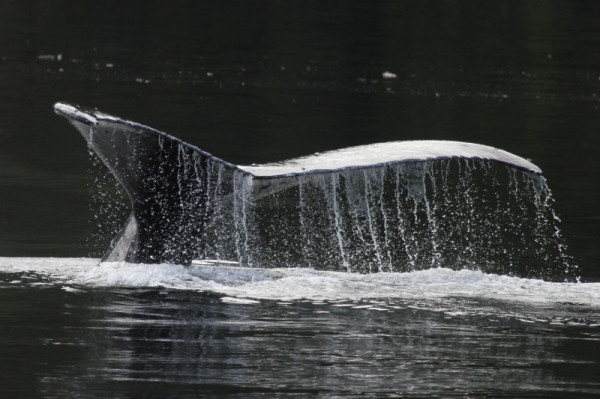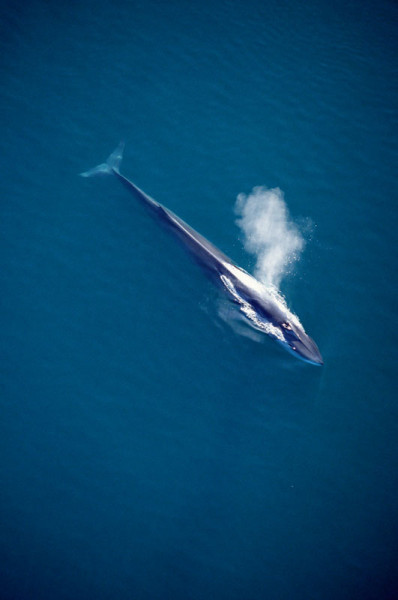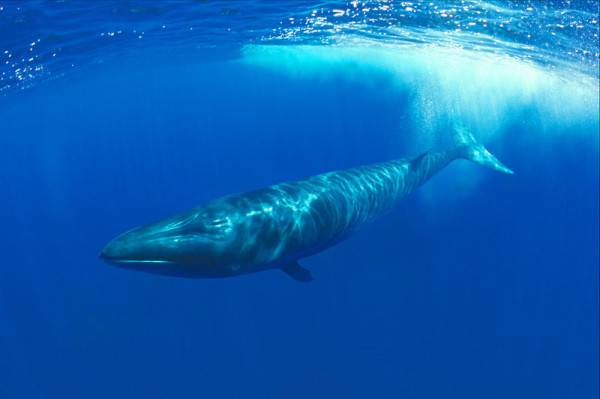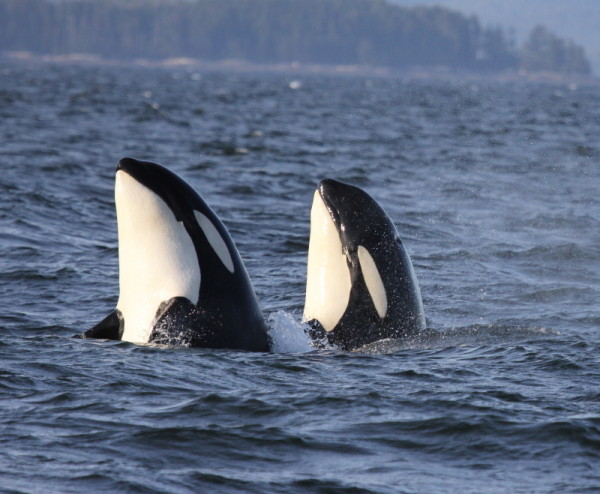Whales of the Great Bear Sea
The Great Bear Sea is a critical habitat for many species of threatened or endangered marine mammals. Here are just a few of the beautiful animals that call this region home.
Humpback Whales
Humpback whales (Megaptera novaeangliae) take their name from the “hump” in front of their small dorsal fin. Humpbacks are mainly black or grey with white undersides to their flukes, flippers and bellies. They are 15m long. One of the most noticeable characteristics of humpback whales is their long flippers.

Fin whales
The fin whale is the second-largest living animal, after the blue whale. This animal is very streamlined in appearance with a distinct ridge along the back behind the dorsal fin, which gives it the nickname “razorback”. The dorsal fin, which is about 60 cm high, is set two thirds of the way along the back. The jaw is large and when the mouth is closed the lower jaw protrudes slightly beyond the tip of the snout.

Sei Whales
This species is identified by a dorsal fin, 38 to 56 ventral grooves, and two rows of 300-380 baleen plates. The sei whale is one of the fastest cetaceans, reaching speeds of up to 50 km per hour.

Killer Whales
One of most iconic whales of Canada’s West Coast, the orca or killer whale uses ‘echolocation’ to communicate – making sounds like loud clicks or ‘pings’ that echo back as the sound bounces off their target. This echo helps tell orca where they are and what’s around them; it can even help them distinguish a more nutritional Chinook salmon from a sockeye. Individual orca families also use sound to keep their tight family pods together, constantly communicating so no one gets lost.

The Northern Gateway Project proposes to build an oil pipeline from the Alberta tar sands through the Great Bear. The pipeline would bring as many as 220 supersized oil tankers into the waters that is home to these whales.
Join WWF and Coastal First Nations to help protect these species from the risks of oil pipelines and tankers by signing your name here: askacanadian.ca
